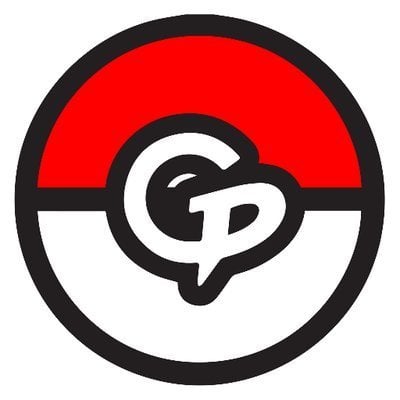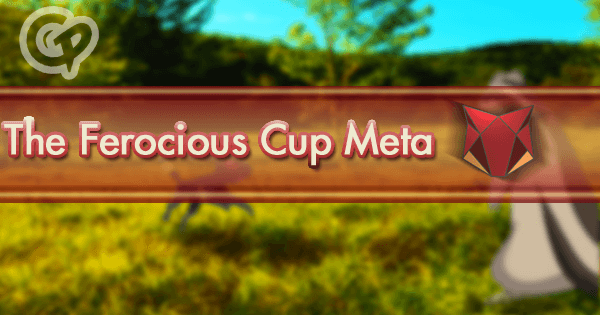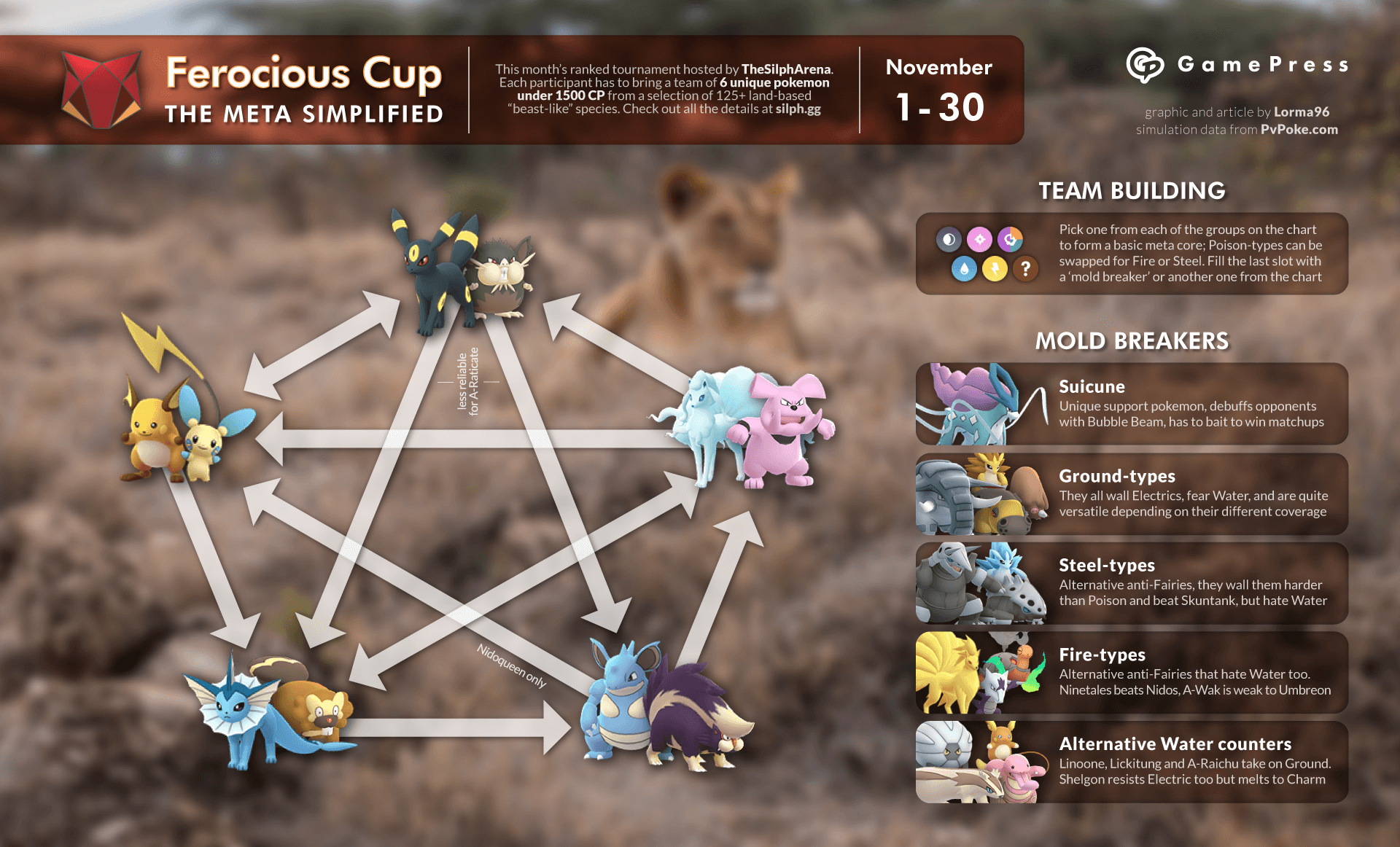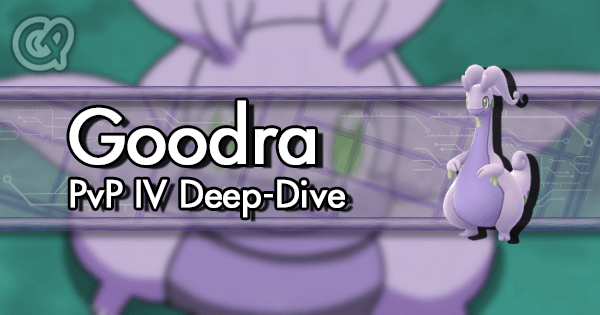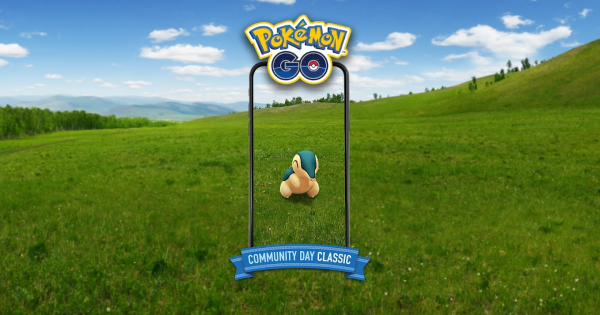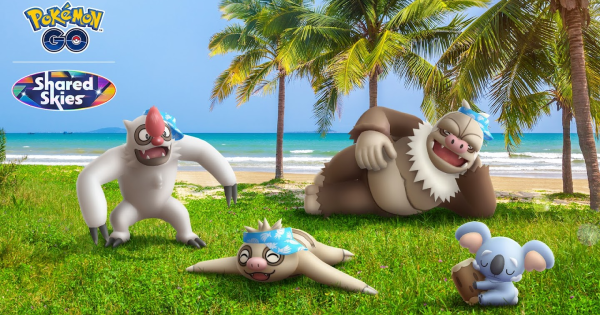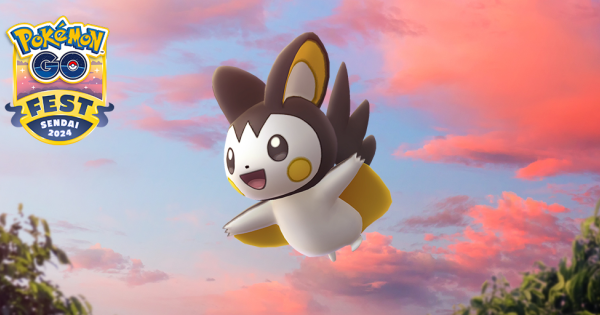Introduction
Following up October’s spooky Sinister Cup, the Silph Arena has decided to change things up completely. November’s Ferocious Cup will be the first to not be restricted to a handful of typings as the theme, but instead to a whitelist of 130 species, or as they like to say, “land-based beast pokemon inspired by the fearsome beasts that rule the land”. You can check the whole list here, or paste this string into the search bar to see for yourself which admitted pokemon you already have in your inventory:
cp-1500&19,20,25-34,37,38,52,53,58,59,77,78,104,105,108,111,112,115,128,133-136,161,162,172,179,180,181,196,197,203,210,215-217,220,221,228,229,231,232,234,235,241,243-248,261-263,264,295,300,301,304-306,309-312,322-326,335,359,371,372,399,400,403-405,408,409,417-419,427,428,431,432,434,435,443-445,449,450,461,463,464,471,473,504-510,522,523,529,530,631
Without predetermined typings that directly counter each other, the Ferocious Cup meta is wide open, with a lot of complicated interactions between many different meta groups, as well as within them. Accordingly, the core of a typical line-up will have to be quite big to include the different roles needed. The main ones are a Dark-type (Umbreon, if possible), a Water-type (Vaporeon, Bibarel or Suicune), an anti-Dark (often Alolan Ninetales), an anti-Water (an Electric or maybe Linoone), and an anti-Fairy (either Poison, Steel or Fire); most teams will feature this composition, which leaves only the sixth spot for a flex pick. As per usual, for this last one you can either double up on one of the core groups, or choose something else that gives your team some additional depth.
As always, for this analysis we have to thank the wonderful resources that are GoBattleSim and PvPoke, which made it possible in conjunction with lots of firsthand experience from different trainers. Note that asterisks indicate legacy moves.
Dark-Types
Dark is a type that is resisted by almost nothing in the Ferocious Cup, apart from Fairies and of course Dark-types themselves. When to that we add that they are some of the best pokemon available in general, the reason why they’re at the top of the meta, and a must have on any line-up, becomes clear — and that’s especially true for the first one we’re gonna look at, the borderline ban-worthy pick that defines the meta itself.
Snarl + Last Resort* + Foul Play or Dark Pulse
Umbreon was always a top tier Great League pokemon in general, with incredibly high bulk pretty much only second to that of Bastiodon. When Snarl was recently updated to be almost as good as Mud Shot, Umbreon’s relevance rose even higher and now it can show its full potential as the undisputed king of the Ferocious meta. It’s a rare instance of a huge tank with an extremely spammy moveset, and outside of a small group of hard counters (Charm users and Tyranitar) the things that can handle it are few, far between and never very reliable. Those will all be highlighted in detail throughout the article.
Regarding its moves, despite what we’d like to say, and what raw win percentages might tell (since most of the time only Dark coverage is needed), legacy Last Resort is a key asset and we wish you good luck on the hard mission of obtaining it. As the top meta pick you can expect the vast majority of teams to feature Umbreon, thus mirror matches will be a common occurence. Well, without Last Resort the mirror will be a struggle even with a 2-shield advantage, and a sure loss otherwise. The same goes for the matchup against Alolan Raticate (the best alternative to legacy Umbreon) and Skuntank, another very common pick which Last Resort would straight up beat. With it, it can also retaliate a little against its Fairy-type counters, and that can give a situational advantage since Umbreon is bulky enough to get off a couple of charged moves before going down. Those are few, but extremely significant gains.
Another consideration worth making is about Foul Play and Dark Pulse as secondary (or primary, if you wanna work with a non-legacy Umbreon) moves. The generally preferred Foul Play is quicker, doing 70 damage for 45 energy, while the other is slightly more efficient, with 80 for 50. Since Snarl awards 13 energy at a time, this means that the first charged move will take the same number of fast moves either way, with the second and third ones only needing one more in the case of Dark Pulse. It’s hard to actually quantify such a small difference in practice: Dark Pulse does do some extra damage when Umbreon would get off the same number of charged moves in a fight regardless, and its one feasible advantage is the shielded Minun matchup, which it gains over the Foul Play variant. It also does worse in other situations, though, such as against Donphan.
Quick Attack + Crunch + Hyper Fang
Don’t have a Last Resort Umbreon? Don’t worry, you’re not alone in this. The best (and probably only) alternative, besides running a standard Umbreon, is this chubby mouse. Its bulk is not as high, but still decent, it has the same Dark and Normal coverage, and a quite neutral matchup with legacy Umbreon itself: it usually loses in the no shield scenario, while the 1-1 comes down to IVs and the 2-2 is generally a win for Raticate. However, it’s not quite as versatile, and even when they both win Raticate usually does so by a smaller margin. The secondary Normal typing means that pretty much anything with a Fighting move destroys it, be it Counter Donphan or Brick Break Raichu, which Umbreon ties and handily beats respectively. And while Quick Attack allows to beat Skuntank more reliably and threaten Fairies more (they can’t tank more than one charged move), it’s a drawback against Steel-types: Aggron and Lairon beat almost all the time, as well as Alolan Sandslash with both shields up. Raticate also has a much harder time against Vaporeon and Bibarel — all shield scenarios against them come down to the wire, with IVs, energy and HP advantages ultimately making the difference — and we still haven’t mentioned how it loses to Nidoqueen in the 1-1, or how close the 2-2 against Alolan Marowak and Hippowdon is. All in all, Raticate is definitely a solid Umbeon replacement, but a downgrade nonetheless; the poor man’s Umbreon, if you will. Sorry, Rat.
Water-Types
Much like Dark, Water damage goes almost completely unresisted in the whole Ferocious Cup, since Grass-types are banned and Shelgon is the only Dragon around. That makes Water-types very potent in a wide array of matchups, and at least one of them should be at the core of a meta line-up. But forget all about Azumarill, Swampert, Lanturn: the only viable ones this time around are three oddballs that punch way above their weight.
Water Gun + Last Resort* or Hydro Pump + Aqua Tail
Welcome back to relevance, Vaporeon! Just like Qwilfish before it, the aquatic eeveelution mainly owes this to the powerful, spammy combination of Water Gun and Aqua Tail. Those two alone are enough to dominate anything Fire, Ground, Rock or Steel, go toe to toe with Raticate as mentioned above, have the upper hand in a close matchup against Skuntank, and even give trouble to some of its counters: the frail Raichu can have a tough time if it doesn’t manage to bait with Brick Break, and Linoone goes down right before the third Grass Knot if the previous two got shielded. Vaporeon also manages to tie in the 1-1 shield scenario against powerful Charm users like Alolan Ninetales and Delcatty, while it only edges out the 0-0 with a small energy advantage. Few things can stop Vaporeon in a neutral matchup, and Umbreon is among them: the only way to flip that is to somehow land a Hydro Pump and shield a Foul Play, and even then it’s very close — pretty much impossible if the opponent has Dark Pulse instead.
And that brings us to the moveset. Last Resort is again preferred, but not as necessary. It does give an edge in Water mirrors but doesn’t make them one-sided, since standard Vaporeon can still win them (less reliably) by landing a Hydro Pump, and it provides an accessible harder hit for when you know you aren’t gonna get to two Aqua Tails anyway. Hydro Pump, on the other hand, can be situationally deadlier with shields down.
Water Gun + Surf + Hyper Fang
Bibarel is probably not the first pokemon you think of when you say “ferocious”, but it is a legitimately strong budget pick. A weather boosted Bidoof and 10k stardust is all you need to have a Water-type that does most of what Vaporeon does. However, much like Alolan Raticate compared to Umbreon, Bibarel trails Vaporeon in a few key matchups and the Normal typing leaves it vulnerable to Fighting moves. To keep the Donphan matchup very slightly positive it needs to hit a bulkpoint thanks to a decent IV spread, and that’s also needed to beat Alolan Ninetales in the 1-1 shield scenario (also with shields down by throwing Hyper Fang) and Skuntank. The matchup against the latter is especially close and hard to read, as they can both hit a crucial bulkpoint, and energy plays a big part since they charge at the same rate. Umbreon beats Bibarel much harder than Vaporeon too: it can only tie even with a 2-shield advantage.
Snarl + Bubble Beam + Hydro Pump
Finally gaining relevance after two years of uselessness, Suicune is the hardest pick to analyze in the Ferocious Cup. Thanks to Snarl it can spam Bubble Beam, a peculiar charged move which does almost no damage, but debuffs the opposing pokemon’s Attack stat by one stage — so after 4 of them, said pokemon will only do half of the damage it should and will barely be able to hurt even its direct targets. Hydro Pump is the only move which deals actual damage, and there are only a few matchups it can win with just Bubble Beam in prolonged fights: Lairon, Alolan Sandslash, Ninetales, Alolan Marowak, Donphan, Piloswine, and if you’re willing to invest a shield, also Vaporeon, Nidoqueen and Aggron. It can also beat everything Fire, Steel and Ground by landing Hydro Pump, even if the first one gets shielded; those wins are the bare minimum for a Water-type, though.
The thing about Suicune is that winning a neutral matchup depends very heavily on shield baiting, and while getting the Hydro Pump shielded is almost always a death sentence, it can beat pretty much anything if the opponent shields a Bubble Beam instead. Yes, even Umbreon goes down if Suicune lands Hydro Pump twice, getting a Bubble Beam shielded either before or (with the help of priority) in between those two. Most of the time, however, in neutral matchups a smart opponent will just not shield the first charged move and, even if it ends up being Hydro Pump, probably come out ahead.
To avoid this generally unfavorable “high risk, high reward” mindgame, the efficient way to play Suicune would probably be purely as a support pokemon. You’ll have to build the battle team around its ability to debuff opponents, and try to spread the debuff as much as possible without necessarily getting Suicune to win its matchups. Actually, losing and letting the right teammate come in to farm for free against an impotent opponent might be even more convenient. These strategies are too in depth to be discussed in this article, but one thing is for sure: if you wanna make the most out of Suicune, you’ll have to consider them. If you just want a straighforward Water-type, go for Vaporeon or Bibarel.
Countering Dark
Despite its dominance, Umbreon does have some very hard counters in the Ferocious Cup, which should occupy at least one slot in a typical line-up. Charm users lead the pack, as they also chunk down pretty much everything that doesn’t resist their Fairy-type steamroll.
Charm + Psyshock + Ice Beam
This fabolous Ice/Fairy-type is another core pick which you can expect to see on just about every team. It comfortably farms down Umbreon even with a big energy advantage, so you don’t have to switch it in instantly (note that this is not true for Raticate): it can tank as many as two Last Resort plus one Foul Play, and come out with an Ice Beam (or almost two Psyshock) ready for the next pokemon coming in! Outside of its main target, Ninetales pretty much only loses hard to anything a super effective fast move, so either Poison, Steel, Rock or Fire; and it can turn even some of those matchups around by shielding twice, such as Skuntank and Hippowdon. Bibarel, Vaporeon, Piloswine, Donphan can give it trouble with one shield up too, but ultimately need favorable IVs or an energy headstart to actually win — or a succesful bait on either the first or second Bubble Beam, in the peculiar case of Suicune. Ninetales also has a convenient narrow advantage in the mirror against other Charm users, which solidifies its spot as the most dominant one.
Charm + Crunch + Close Combat
The angry pink dog is the most comparable alternative to Ninetales, and despite its significantly lower bulk it has an arguably better typing and a few perks of its own. One is the typing, which, however, only really comes in handy to beat Hippowdon. It usually can’t survive heavy hitting charged moves, thus performing much worse when shields are down (most notably losing the Vaporeon, Suicune, Raichu and Piloswine matchups) and also picking up losses in the 1-1 shield scenario against Linoone and Minun. At the same time Granbull’s high Attack stat allows it to take things down quicker, which gives it more consistent wins against Donphan and Bibarel. For almost everything else it will fill Ninetales’ shoes quite well, just with different flavors of charged moves: the accessible, ever neutral Crunch paired with Close Combat to threaten Steel-types when they come in after that Granbull has farmed something down. And if you’re thinking of running Snarl to reach those two quicker, don’t: Granbull is not quite tanky enough to do that job reliably.
Charm + Disarming Voice and Wild Charge
Delcatty is an unconventional Charm user, as well as the most expensive one since it needs to be maxed out. But the pure Normal typing actually does more harm than good: with no STAB it can farm down Dark-types but will always need to spend a shield when switched in against them: even if you’re quick on the draw, Umbreon and Raticate will get to three and two charged moves respectively, and Delcatty can’t take all that without Fairies’ resistance to Dark. Delcatty’s typing also causes negative matchups against Donphan and Furret (not squishy Raichu) and not having Ninetales’ weaknesses doesn’t really change much either, with the exceptions of handily beating Piloswine and Linoone, and being able to take an Alolan Marowak pretty low. The only ways to beat a Skuntank with Delcatty are to either block Crunch twice or land a charged move. Those are probably its biggest plus: Disarming Voice is the (underused) best and cheapest Fairy-type charged move in the game, and Wild Charge threatens basically anything that doesn’t resist it. Enabling Delcatty to actually make use of them is likely the smart way to play it.
Smack Down + Crunch + Stone Edge
The only thing without Charm to totally shut down both Umbreon and Alolan Raticate is Tyranitar, thanks to strong neutral Smack Down damage and resistances to everything they can throw at it. It doesn’t go as far as farming them down like Fairies do, but it reliably wins every even shield scenario, and can also beat Umbreon with a shield disadvantage. The interesting part about Tyranitar’s role is that it also wrecks Skuntank (it can even farm it down with a shield to come out with two Crunches ready to go) and Fire-types, some of the most common counters to Fairy. If that’s all your opponent has to protect his Umbreon, Tyranitar can be really threatening; on the other hand, it loses hard to other Poisons as well as Steel-types. It only has a chance against Nidoqueen and Alolan Sandslash if it shields twice, something that it also needs to do to overcome other adverse matchups such as Minun, Linoone, Piloswine. In fact, there are plenty of things that easily take down Tyranitar. It doesn’t ever want to see Charm users, Water-types (apart from a Suicune that doesn’t land the Hydro Pump), Ground-types or anything with a Fighting move, so tread lightly if you want to actually win with it.
Countering Water
Just like Dark-types, the very dominant Water-types have a restricted group of counters that take them down and have a solid spread of other positive matchups. One anti-Water should always be on a balanced line-up, and a case could be made for two since this meta group actually comes in a few different flavors. We’ll start from the most popular picks of the bunch: Electric-types.
Spark + Thunderbolt + Discharge
Historically overshadowed by other critters of the same type and hindered by its complete lack of coverage, in the Ferocious Cup the not-so-ferocious Minun shines as the most balanced pure Electric-type. Its most remarkable feat is not beating Water-types — which it does, handily, even with just Discharge — but the slightly favorable 1-1 shield scenario against Umbreon. It can win it without needing to bait, while it only goes near with shields down, only possibly edging it with a small energy advantage if it goes straight for Discharge; the 2-2 is even flakier as it needs to bait twice in order to win. Beware that if Umbreon runs Dark Pulse, the 1-1 will turn into a loss too. Minun also works well against Alolan Raticate: it wins the 1-1 with straight Discharge, the 0-0 comes down to priority, and it loses in the 2-2. Outside of the interesting Dark-type matchups, Minun has a very wide spread of close, playable matchups. Some relevant ones include Skuntank (which depends on IVs and energy, only becoming easy in the 2-2 with straight Discharge), Alolan Ninetales (generally negative, but can be flipped with just 3 fast moves of energy advantage), Granbull (only a loss with 2 shields), Ninetales (only struggling hard in the 1-1), Aggron and Lairon (both generally positive), Alolan Sandslash and Alolan Marowak (both generally negative), Raichu and Linoone (both depending on baiting and IVs). Yeah, that’s a lot! Minun is very versatile and only becomes dead weight against Ground-types and Shelgon, the general counters to Electric.
Thunder Shock* or Spark + Wild Charge + Brick Break
Compared to Minun, Raichu doesn’t fare quite as well against Umbreon, though it can somewhat hurt it and go remarkably close in the 2-2 even with just Brick Break. This Fighting move, despite its very weak stats, makes it a counter to Raticate, Tyranitar and all Steel-types. Normal-types are trickier, as Raichu is too squishy to keep up with the likes of Delcatty and Linoone; for the same reason, it gets deleted quite quickly by Fairies. It has close matchups with Skuntank and Ninetales, depending largely on HP or energy advantages and IVs, and both getting more positive with the more shields in play. Legacy Thunder Shock is superior for its higher energy generation, but not required: Spark does most of the same things and the extra damage can even help from time to time.
Thunder Shock + Thunder Punch + Grass Knot
Compared to its older brother, Alolan Raichu has the huge drawback of being weak to Dark and Ghost. It wants to stay away at all costs from Umbreon, Raticate, Skuntank, and fellow Water counter Linoone. The main reason to bring it would be the Grass coverage: while without Brick Break it generally goes down to Steel, only having a chance in the 1-1 shield scenario against an Alolan Sandslash without Bulldoze and a non-baiting Lairon, Grass Knot threatens the Ground-types that supposedly counter Electric. It handily beats some without needing to bait (Donphan and Sandslash, as well as the Rock-type Tyranitar) and has close, IV dependent matchups with others (Piloswine and Hippowdon). The Nidoroyals are exceptions, since their Poison typing neutralizes the weakness to Grass. Neutral coverage also helps A-Chu reliably beat Minun unless the opponent is willing to shield it twice. Thunder Punch is more than enough to secure the Vaporeon and Bibarel wins, while Suicune becomes trickier since it can win big by either landing the Hydro Pump right away or baiting with Bubble Beam.
Spark + Thunderbolt + Thunder Punch
If you’re lucky enough to have a high IV specimen, and if you’re willing to max it out at only right above 1200 CP, Pachirisu is the tankiest Electric available with a moveset equivalent to Minun’s. It doesn’t hit hard, with a lower Attack stat than Umbreon, but it can absorb even the heavier neutral hits. Unlike Minun, it loses very hard to Umbreon and prefers to face Alolan Raticate instead, which can go either way depending on shield baiting. Much like Minun, on the other hand, it’s got many close matchups against the field outside of its specialized Ground counters. In the 1-1 shield scenario it can uniquely beat Alolan Ninetales (not Granbull without a small energy advantage) as well as Skuntank and non-legacy Ninetales, and it can go quite even with all Steel-types and other Electrics. Linoone and Alolan Marowak are ones to shut it down reliably.
Shadow Claw + Grass Knot + Dig
Electric-types aren’t the only things that take care of Water! Linoone does that too thanks to its Grass Knot charged quite quickly by Shadow Claw. However, it functions as a much softer counter, against Bibarel in particular since it double resists Ghost damage and can take it down in the 1-1 shield scenario if it has even somewhat decent IVs. Vaporeon, on the other hand, can beat it if it shields twice by outspeeding the third Grass Knot. In turn, the Grass coverage allows it to handily beat all the Ground-types that the Electrics fear so much. The only real exception to that rule is a Donphan with two shields, though Piloswine and Nidoqueen can also tie in the 2-2 and 1-1 respectively. Linoone also generally beats Raichu (only losing if the opponent shields twice and goes straight for Brick Break) and Minun if it doesn’t get a Dig shielded. Yes, the horrible Dig is oddly the second move of choice this time since there aren’t any Flying targets for Thunder, while Ground coverage is useful to threaten what resists Grass Knot, so Skuntank, Steel-types and Fire-types. Not like Linoone has an easy time against them anyway: it has to rely on baits to beat Aggron, Ninetales and Alolan Marowak, as well as an energy advantage against Skuntank and Alolan Sandslash. It also goes down to staples like Umbreon, Alolan Raticate and Alolan Ninetales, and doesn’t have anything to take down Shelgon or Delcatty. To be fair though, Linoone’s losses are rarely completely one-sided, and it can put up a decent fight in most situations even when at a disadvantage.
Lick + Power Whip + Stomp
The licky boy is a more expensive alternative to Linoone (needs to be maxed out), with a little more bulk, the same Normal typing and the same Ghost and Grass coverage. Lick generates energy much more slowly than Shadow Claw though, and because of that Lickitung is even less reliable as a Water counter. It loses almost always to Bibarel and doesn’t function as a counter switch to Vaporeon in the 1-1 shield scenario. In addition to that, it loses the Donphan, Nidoqueen and Piloswine matchups compared to Linoone, having to bait them with Stomp to even have a small chance. On the other hand, the extra durability helps Lickitung overcome Aggron, Lairon, Alolan Marowak, even an Alolan Ninetales with optimized IVs in the 1-1 since it won’t hit a Charm breakpoint, and not be as worried by Suicune’s gimmicks.
Dragon Breath + Twister + Flamethrower
Shelgon is quite the wild card in the Ferocious meta, with a unique spread of resistances and matchups thanks to its Dragon typing. For one, it’s the only thing to resist Water, apart from Water itself of course, and this is why it perfectly fits in this group. Dragon Breath and Twister (yes, Twister is terrible, but still does better than Dragon Pulse due to its speed) will hit Water-types hard and the only chance of victory for Vaporeon and Bibarel is shielding first and hoping to somehow land a neutral Last Resort or Hyper Fang later. Shelgon also resists Electric and Fire, and consistently beats every pokemon of those types with the notable exception of Alolan Marowak. Taking down both Linoone and its Ground targets (with the exceptions of Nidoroyals in the 1-1 shield scenario, and Donphan with shields down) solidifies its position as the most dominant among Water counters. However, like others, Shelgon loses quite hard to Umbreon, by a narrower margin to Alolan Raticate and in the 1-1 against Skuntank. As a Dragon-type it must also be careful about avoiding anything Ice or Fairy; the latter is an especially annoying weakness since playing it in tandem with king Umbreon becomes quite risky.
Countering Fairy: Poison-Types
Everything listed so far is either weak or neutral to Fairy-types, so you will need to include at least one Fairy counter in your team if you don’t want Alolan Ninetales to be the safest of switch-ins. There are different ways to go about this role: Fairy is resisted by Poison, Fire and Steel. These three subgroups roughly counter each other, and there are several viable options within each of them. For these reasons they are split into different sections here. Let’s start from Poison-types, the most versatile subgroup of the three.
Poison Jab + Crunch + Sludge Bomb or Flamethrower
We’ve just talked about Fairy counters as being the only things to resist Charm, and here we are talking Skuntank, which actually doesn’t. In fact its victory margin over Alolan Ninetales and Granbull is quite narrow: the latter comes down to IVs, while it needs Crunch to finish the former in the 1-1 and actually loses if the opponent shields twice, gaining shield advantage in the process. But look, beating things hard just isn’t Skuntank’s thing; it functions more as the “jack of all trades” of the Ferocious Cup instead. Its matchups, whether positive or negative, generally come down to the wire and many of its usual losses can be flipped with a few fast moves of energy advantage and the right shielding strategy — such as Piloswine and Aggron in the 1-1; or Minun, Donphan, and with a bit of luck even Umbreon, Vaporeon, Nidoqueen, Alolan Raticate and Alolan Marowak in the 2-2. That means two things: try your best to get a Skuntank with a decent IV spread, and it will be very dangerous as a switch in if you know how to use it.
As for the moveset, Crunch is mandatory, but the second charged move is worth some consideration. Flamethrower is needed to beat Piloswine, Alolan Sandslash and an opposing Skuntank, but if you aren’t worried about those matchups, Sludge Bomb provides heavier STAB damage for other fellow Dark-types, the only things you can’t just Crunch away. With Sludge Bomb the Alolan Raticate matchup turns from loss to tie in all shield scenarios, and Skuntank can even beat legacy Umbreon in the 0-0 and (with top notch IVs only) the 1-1.
Poison Jab + Earth Power + Earthquake
As both Poison and Ground, enjoying the resistances and coverage of both types, the Queen fills two key roles at once in this meta. With its fast move she hard counters Charm users, though it must avoid getting hit by Psyshock and has to invest one shield if she wants to farm a Fairy down completely to come out with 100 energy. That can actually be a very threatening strategy since nothing in the Cup resists its potent Ground charged moves. Those also give it a major advantage over Electric-types and most other Fairy counters, with the exceptions of Alolan Sandslash, Ninetales (which win in all shielded scenarios thanks to their quick super effective charged moves) and Alolan Marowak (only with perfect baiting in the 1-1, and even with just Bone Club if it shields twice). Other relevant wins of Nidoqueen include Alolan Raticate and Donphan outside of the 2-2 shield scenario, the one that she enjoys less, preferring to come out in the late game instead. Fun fact, with a 1-0 shield advantage Nidoqueen can beat everything but Suicune! Ironically, in the 2-2 with decent IVs she can get a surprising edge on Foul Play Umbreon, which she also beats without shields with a double Earth Power; in the 1-1 she generally loses, but not too badly either. Nidoqueen’s biggest drawback is that her negative matchups are much harder than Skuntank’s: all Water-types delete her, Piloswine, Shelgon and Sandslash outspeed her.
Double Ground might seem like a strange moveset, but honestly the usual Stone Edge doesn’t bring much to the table this time. With no Flying or Bug around, its only targets would be Fire- and Ice-types; the former are also weak to Ground, while the latters in this Cup either aren’t weak to Rock like Piloswine, or are easy wins regardless like Alolan Ninetales. Ground hits everything for at least neutral instead, and Earthquake gains wins with shields down over Alolan Raticate, Alolan Sandslash, Hippowdon, Furret, Nidoqueen herself, and a CMP-tie with Linoone.
Fury Cutter* + Earth Power + Earthquake or Sludge Wave
As per usual, the King lives in the shadow of the more defensive Queen. This time around, the only real reason to consider him is if you have one with the legacy move Fury Cutter. It charges his nukes quicker than Poison Jab, which allows him to win the Nido mirror, but it’s not very effective on Fairies. That means that Nidoking can never beat them if they shield twice, getting taken out by resisted Charm due to its frailty, and even with shields down he needs to have Sludge Wave instead of Earthquake to kill Alolan Ninetales before it gets to Psyshock. The extra speed allows Nidoking to pick up a Shelgon win compared to Nidoqueen, but at the same time, despite having a more effective fast move, it loses her key positive matchups against Umbreon and Alolan Raticate, as well as Skuntank and Lairon in the 2-2. If you have a legacy Nidoking that you’re itching to use, go ahead, it’s absolutely viable; but if we have to recommend one of the two, the Queen just seems superior overall.
Countering Fairy: Steel-Types
Steel is probably the most hardcore answer to Alolan Ninetales, which has a crippling double weakness to it and only not very effective moves to boot. Steel-types also have the upper hand over Skuntank thanks to their double resistance to Poison, but they are countered by Water just as hard as the Nidoroyals.
Smack Down + Heavy Slam + Stone Edge
The meme itself, the game’s favorite recommended pokemon, is actually good for once! With its triple (!) resistance to Poison it hard counters Skuntank and can even farm it down completely with Smack Down, although it must invest a shield and be careful that the opponent doesn’t reach the third lethal Crunch. Yes, Aggron looks tankier than it actually is and neutral hits still do quite a bit to it. For this reason it generally loses to Umbreon — though with decent IVs it can get off the second Stone Edge to grab a tie in the 1-1 shield scenario — while the resistance to Normal gives it shielded wins over Alolan Raticate. Smack Down also wrecks Fire-types, only struggling a bit against a legacy Ninetales or an Alolan Marowak with an energy advantage. On the other hand, other than Water, Aggron suffers from double weaknesses to Fighting and Ground and it goes down quickly to anything equipped with a move of those types. It also loses to Minun in the 1-1, but can top it in both the 0-0 and (if it doesn’t fall for a bait twice) the 2-2.
So far we’ve only talked about the Smack Down variant. Dragon Tail trades big damage for high energy generation, achieving more convincing wins over Shelgon and Stone Edge Piloswine, also giving more of a chance against Linoone and a more consistent way to retaliate with Heavy Slam against Ground-types. On the other hand, though, it does worse to some degree in almost all of the matchups listed above.
Metal Claw + Rock Slide + Body Slam
It comes with many of the same pros and cons of its big brother, only a little more bulk, swapped coverage (Steel as the fast move and Rock as the charged) and some extra speed given by the ever neutral Body Slam, despite Metal Claw being quite slow at charging. It does make Lairon the hardest Alolan Ninetales counter available though, as it can farm it down, eat anything it throws and have two Rock Slides ready for the next thing coming in. However, Metal Claw being not very effective on Fire and Electric gives Lairon a much harder time against Minun and Alolan Marowak compared to Aggron, though Rock Slide still hits them hard and keeps the Ninetales matchup generally positive — not always if it’s facing a Flamethrower variant. Its victory margin over Alolan Raticate is thinner too, especially in the 1-1 where it only wins by going for Body Slam.
Powder Snow + Ice Punch + Gyro Ball or Bulldoze
The only Steel to rely on its charged move to beat Alolan Ninetales, it still does that very well and without needing to bait thanks to Gyro Ball, though in a less dominant way than Aggron or Lairon: it can’t farm as much and it needs to bait twice to win at a 1-2 or 0-2 shield disadvantage. Just like the Aron bros (which it generally loses to), A-Slash has got two crippling double weaknesses, to Fighting and Fire. However, while all Fire-types farm it down without much thought, Donphan often can’t because if it’s just 2 or 3 fast moves ahead A-Slash will get to a second Ice Punch, and one is enough to take the opponent out or almost so. Brick Break Raichu even loses in the 2-2 shield scenario, the only one where A-Slash can also overcome Alolan Raticate and Flamethrower Skuntank (the Sludge Bomb variant is always a win). Umbreon beats it too, and despite not being weak, it gets walled hard by Water-types. On the flip side, it dominates Ground-types and beats Minun (apart from the 2-2 which is either a close loss or a tie depending on baiting) as well as Linoone with shields up.
If you decide to run Bulldoze as the coverage move instead of Gyro Ball, Alolan Sandslash’ matchups change quite a bit. With Bulldoze it does not counter Alolan Ninetales at all, only barely winning the 0-0 and, with correct baiting, the 1-1. However, it picks up wins against Flamethrower Skuntank (though it can lose the 1-1 in the worst case baiting scenario), Aggron (outside of the 2-2) and Lairon.
Countering Fairy: Fire-Types
Just like the Nidoroyals and Steel-types, Fire-types of course melt in the presence of Water-types. They are quite versatile in different ways in neutral matchups, as we’ll see.
Fire Spin + Flamethrower* or Solar Beam + Psyshock
Two Ninetales is better than one, right? The Kantonian obviously beats the Alolan, although it will survive with just a handful of HP if it tries to tank a Psyshock and farm it down completely — something that could go very wrong if it’s a bad IV legacy specimen. The legacy Flamethrower variant is indeed recommended here, as Psyshock alone, while essential for its speed and coverage (it nets Ninetales consistent wins over Nidoroyals), doesn’t threaten Dark-types at all. With Flamethrower it can beat Skuntank in the 0-0 and Alolan Raticate in the 1-1 without needing to bait, though it still loses to both in other scenarios, and can also deal more consistent damage to Umbreon, Aggron and Lairon despite still ultimately losing. The legacy move gives it convincing wins over Donphan, Linoone and Minun (only in the 1-1; the 0-0 comes down to IVs and the 2-2 is only winnable by going straight for Psyshock while shielding Thunderbolt twice), but won’t help against Shelgon. Solar Beam’s use is way more situational, though it’s still an absolutely viable move and can prove deadly in some situations, especially after Ninetales farms something down and a Water-type comes in to finish it.
Fire Spin + Shadow Ball + Bone Club
A-Wak is another budget Fairy counter since most people will have one ready from the Sinister Cup, though it’s not nearly as dominant this month. The main reason is that despite handily beating Charm users it loses very hard to the two other core picks, Umbreon and Water-types, and can’t beat the former or Bibarel even at a 2-shield advantage. The Alolan Raticate matchup is negative too, but slightly less so, as it can get away with a IV dependent tie if it shields twice. While it also can’t beat Tyranitar or Linoone (unless it shields a Dig, which a smart opponent shouldn’t usually go for since it can win with just Grass Knot), the good thing about Marowak is that it can do well in pretty much any other matchup. Bone Club comes in clutch to beat Skuntank (outside of the 1-1 shield scenario, where it needs to be at least two fast moves ahead), Raichu and Minun (only needing good IVs for the 2-2 against the latter), and Lairon. Aggron and Nidoqueen are tougher customers, but can be overcome with an energy advantage in the 1-1, and in the Queen’s case also by landing a Shadow Ball or investing both shields. Marowak can generally beat other Ground-types too, with Sandslash giving it the most issues as it needs to succesfully bait against it. This is why if you manage to play around Umbreon and Water (Minun and Alolan Ninetales could help as they check both), it could really become an asset.
Fire Spin + Earthquake + Solar Beam
If you went to Chicago GoFest in 2018, or southern Asia at some point, or have a friend that did and is willing to trade you one, know that with its slow charged moves with extremely wide coverage Torkoal is one of the best dedicated closers in this Cup. With all shields in play it literally only beats Charm users and Piloswine, though it does come remarkably close against Umbreon if it wins priority on the third Earthquake. It’s also the only scenario where it can’t get to nuke other Fire-types, which it does reliably otherwise. The 1-1 shield scenario is instead the only one where Torkoal takes down Alolan Raticate, and there it also picks up Skuntank and non-Earthquake Donphan (both only with good IVs), Lairon, and Linoone if it reads the bait. With no shields Skuntank and Lairon get straight up deleted, just like all other Steel-types, Electrics, and even Vaporeon and Shelgon by a hair. But just like Nidoqueen, where Torkoal truly shines is at a 1-0 shield advantage: if you manage to set that up you’re halfway to a win, since it’s a scenario where it actually beats everything in the meta (bar Suicune if you shield the Bubble Beam), and quite handily too!
Countering Electric and Anti-Fairies
Electric, Poison, Fire, Steel — notice anything in common? Yes, they’re all weak to Ground. Actually, with Bug and Flying banned, much like with Water, there is nothing that even resists Ground damage in the Ferocious Cup! This makes them quite powerful anti-meta picks for that sixth “flex” spot in a line-up.
Counter + Heavy Slam + Earthquake or Play Rough
Being the only viable Counter user in the Ferocious Cup, with the other one being Ursaring, the rolling elephant fills a very interesting and unique role. Thanks to its typing it walls Electrics and counters Skuntank very reliably, and thanks to its aggressive Fighting damage it makes quick work of Alolan Raticate and all Steel-types, and even ties with Bibarel — while it only overcomes Linoone by shielding twice. Thanks to access to Heavy Slam, lastly, it threatens Alolan Ninetales, though it needs at least one Counter of energy advantage to beat it in the 1-1 shield scenario in addition to the easy 0-0. Umbreon makes for a complicated even matchup too, that we’ll now analyze in depth (keep in mind that the outcome can change greatly with HP and energy differences). With no shields it mainly depends on IVs, but it’s generally a narrow win against a Foul Play variant and a narrow loss against a Dark Pulse one. In the 1-1 against Foul Play the only win condition is to get Heavy Slam shielded and then land the Play Rough, while Earthquake gets outsped by the third, lethal opposing charged move (the main reason to run Play Rough in the first place); against Dark Pulse on the other hand Donphan wins even with straight Heavy Slam or Play Rough. The 2-2 is also a loss against Foul Play and a quite handy win against Dark Pulse as Umbreon can’t get off a fourth one.
Finally looking at other matchups, Donphan usually loses to Nidoqueen, Ninetales, Alolan Marowak and Shelgon unless it somehow lands a super effective charged move, though it also edges the former two out in the 2-2 and can tie with the latter in the 1-1. Earthquake makes Donphan a very potent closer too, with the same ability as Nidoqueen and Torkoal to wreck literally anything if it finds itself with a 1-0 shield advantage. Lastly, since it can learn it too, Charm is worth a final consideration. Charm lets Donphan wreck Umbreon (can farm it down if it spends a shield) but really limits it in most other matchups. Its main purpose would probably be the surprise factor, which can be an underrated asset.
Powder Snow + Avalanche + Stone Edge or Bulldoze
Always superior to its less bulky evolved form, the swine’s terrible typing this time is partially mitigated by the rarity of Grass and Fighting moves — it does lose to Linoone, but still beats Brick Break Raichu, as well as Donphan outside of the 2-2 — but it still has to deal with its other weaknesses to Water, Fire and Steel. Besides the obvious Vaporeon and Bibarel, these bring Piloswine losses to Lairon and Gyro Ball Alolan Sandslash (it can actually top Aggron in the 1-1 even with just Avalanche) as well as Ninetales and Alolan Marowak. Bulldoze is quite a terrible move but it’s useful to threaten the former two, while Stone Edge hits Fire-types much harder, though it doesn’t one-shot. To be fair, the main benefit of running Stone Edge is actually the Alolan Ninetales matchup, which Piloswine very narrowly wins in the 1-1 shield scenario and, depending on IVs, the 0-0 too. Against almost everything else the power duo of Powder Snow and Avalanche alone puts in major work, giving it winning matchups against every single other Ground-type, outspeeding Skuntank’s dangerous Flamethrower to take it down and even giving trouble to Umbreon: it even beats Dark Pulse variant with shields up!
Mud Shot + Earthquake + Rock Tomb
Without the usual Swampert and Whiscash splashing around, the only Mud Shot user available in the Ferocious Cup is the Kantonian form of Sandslash, of all things. Don’t make the mistake of underestimating it just because it’s the first — and honestly, it might be the last — time it’s even talked about: having by far the fastest Earthquake in a meta where nothing resists makes Sandslash very powerful when shields are down. In that scenario it notably beats Umbreon, and apart from the obvious Water-types it only goes down to Piloswine, Linoone, and just barely to Alolan Ninetales and Alolan Raticate, the only ones in this list that (unlike their counterparts, Granbull and Umbreon) it can also tie or beat in the 1-1 shield scenario. The 1-1 is also where it speed ties with Donphan, Shelgon and even Bibarel. In general with shields up it still does its main job, consistently taking down Electrics and all Fairy counters except its Alolan brother and, only if it lands the bait, Alolan Marowak. As a secondary move, Rock Tomb is only rarely useful to finish things a little quicker, since it costs just 5 energy less than Earthquake and does a lot less damage even when more effective, like against Alolan Ninetales.
Fire Fang or Ice Fang or Thunder Fang + Body Slam + Earth Power
Upon its release the sandy hippo was just another case of a pokemon with good potential hindered by terrible fast moves, despite its impressive array of charged ones. But in a recent update, Niantic decided to introduce the three elemental Fangs (Fire, Ice and Thunder), fast move counterparts to the Punches, and gave them decent damage oriented stats. Well, Hippowdon got all of them, and all are viable in the Ferocious Cup! This makes it a real wild card with high surprise factor. Before delving into the Fangs’ unique niches, let’s look at the matchups they have in common. Hippowdon obviously tears through Electrics and always loses to Umbreon as well as Linoone and Granbull, but it can beat Alolan Raticate if it lands the Earth Power and shields a Crunch, or also if it shields twice and goes straight for Body Slam. That’s the same way it takes down Skuntank in the 1-1 shield scenario, while it narrowly loses the 2-2, and it relies mainly on baiting to beat a shielded Torkoal, Aggron or Lairon — especially with Ice Fang, which doesn’t allow it to win with a third Body Slam if the opponent shields the previous two.
Now onto the differences: Hippowdon can basically fill the secondary role you need it to, depending on its set. Fire Fang is probably the most popular pick for its positive Alolan Ninetales matchup, as well as the Alolan Sandslash and Piloswine ones. It doesn’t have a chance against them with Ice Fang, but it counters all other Ground-types and Shelgon to the point of farming them down with a shield. With Thunder Fang it drops all of the above for the sole purpose of bamboozling Water-types that may think they can counter it (actually beating Vaporeon in the 2-2, Bibarel in the 1-1 and 2-2, and Suicune as long as it shields the Hydro Pump), and to damage Fire-types a bit more consistently.
Quick Attack + Brick Break + Hyper Beam
No, we’re not drunk — Furret is not a Ground-type by any means. It’s actually in this section only because it’s the only meta pick that doesn’t fit any of the previously listed categories in this article, so it just had to be put somewhere. It’s a Normal-type that doesn’t offer Grass coverage like Linoone, or Charm damage like Delcatty, but instead settles for the role of a quite flexible and bulky generalist. Despite its weak damage, Brick Break is so spammy that it takes down all fellow Normal-types (including Bibarel), all Steels and Piloswine, and allows it to consistently hurt other meta giants like Umbreon, Vaporeon, Minun and Shelgon though it still loses to them. To actually beat them (except Umbreon, too tanky to care) Furret relies heavily on shield baiting to land its unique, powerful Hyper Beam, a guaranteed OHKO on everything in the meta but Alolan Marowak, the only thing to wall it completely. If it manages to bait with Brick Break when each player has one shield left, Hyper Beam will come to punish all Water-types and Minun. With shields down the only things that can outspeed it and survive are Nidoqueen, Raichu, Donphan and Shelgon, while Charm users speed tie. Whenever Furret gets its Hyper Beam shielded, though, it will almost always go down pretty uncerimoniously.

